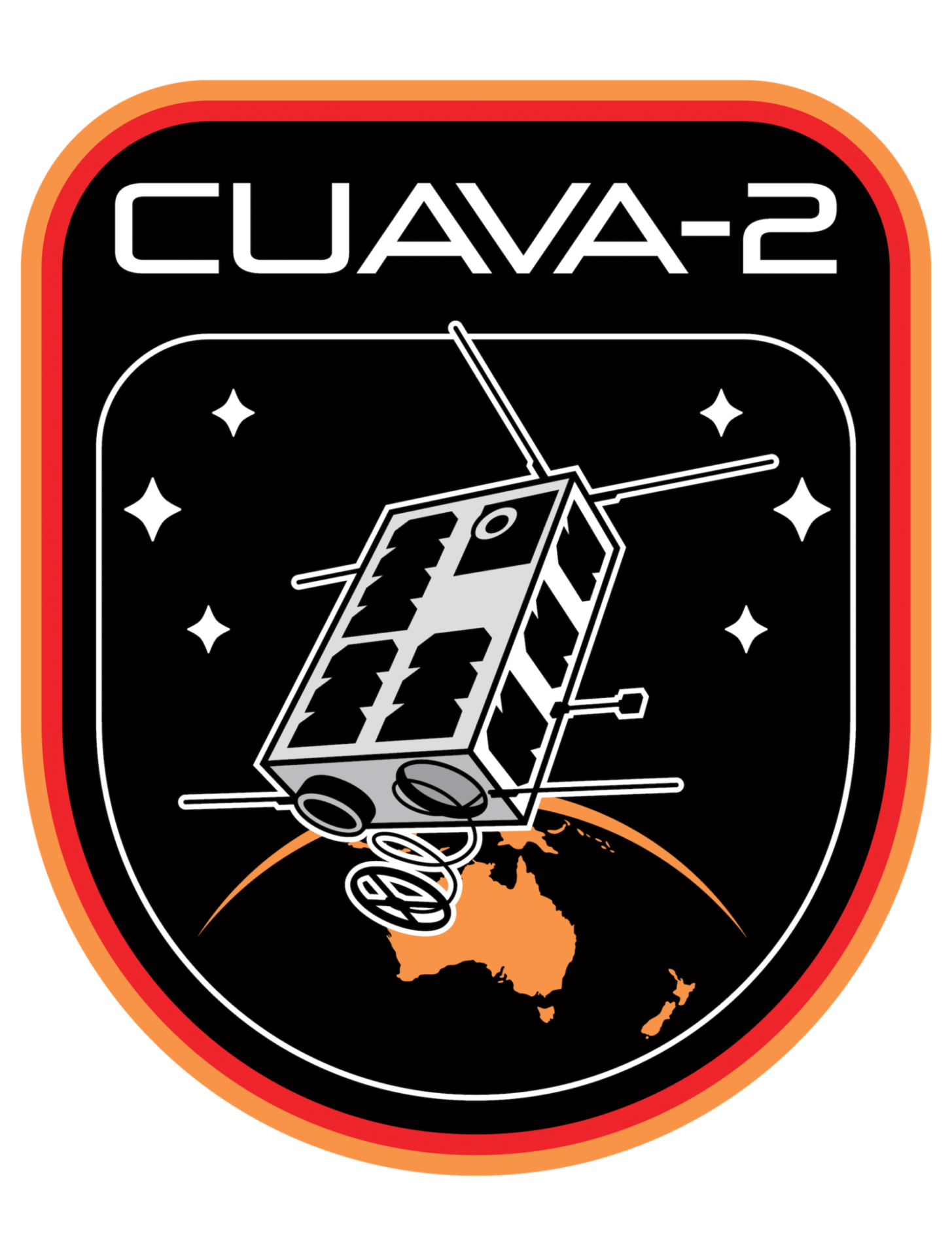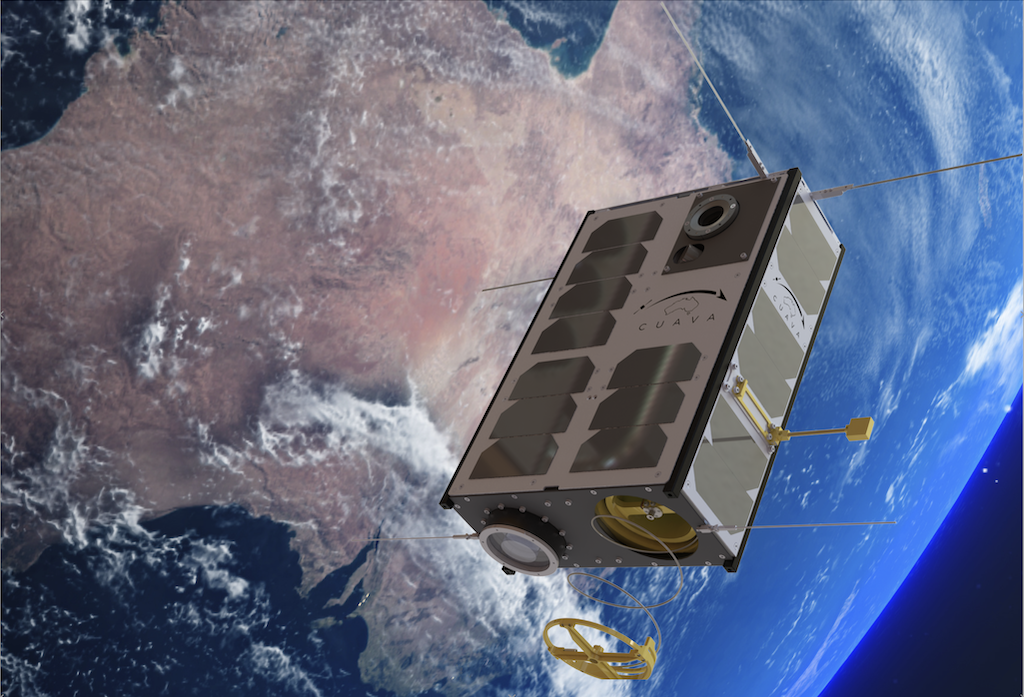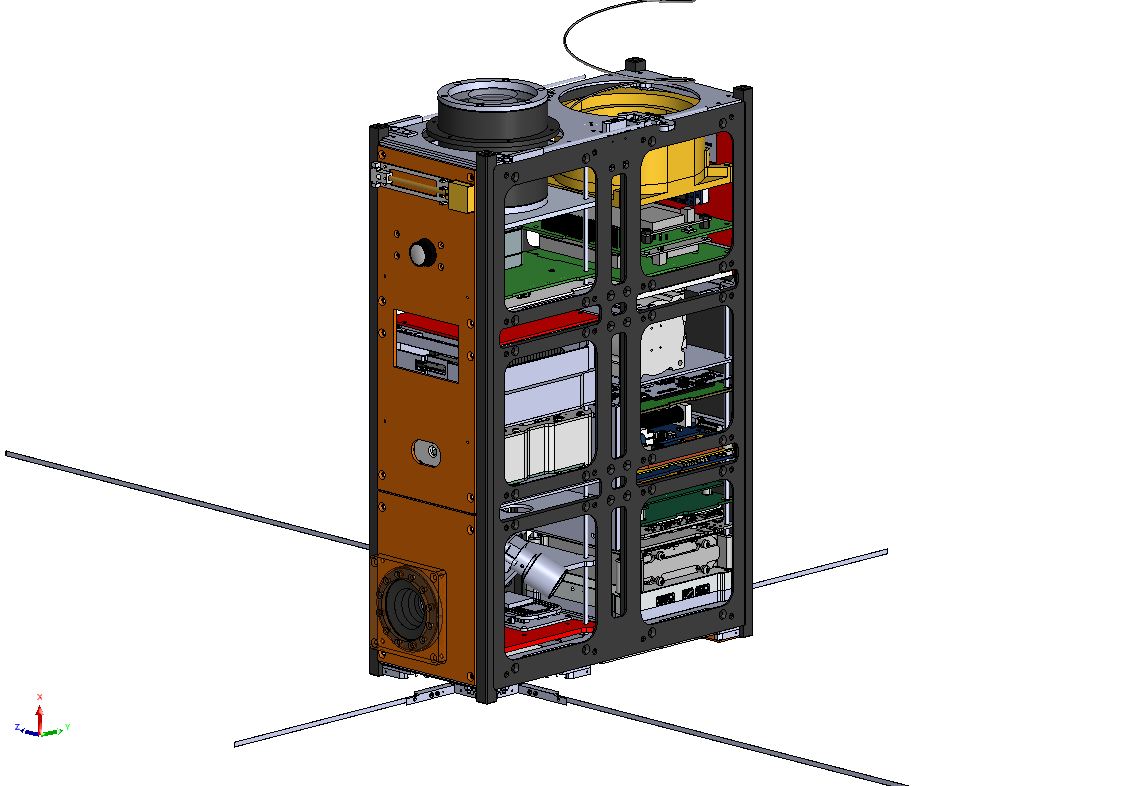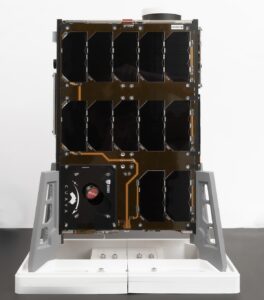Mission Motivation and Objectives:
The objectives of CUAVA’s flight programs are to train future engineers, industry people and scientists in space and UAV applications and in commercialisation, to increase the capabilities of CubeSats and UAVs to solve particular research problems, to flight-test new applications and services, and to develop the future workforce of the space and UAV industries in Australia.
The CUAVA-2 satellite is the second satellite designed, developed and launched by the CUAVA ARC Training Centre. CUAVA-2 is a second iteration of some of the payloads developed for the CUAVA-1 mission, which was deployed in 2021 but was impacted by space radiation and could not be contacted. CUAVA-2 carries first-generation payloads developed by CUAVA and their partners, and will directly address one of the Centre’s core goals of flight-testing new technology.
CUAVA-2 is a 6U CubeSat that carries eight predominantly research focused payloads, with Remote Sensing, Earth Observation, and Space Weather as key foci for the mission.
Payloads onboard the CUAVA-2 mission are:
- a GPS Reflectometry Receiver (Harry3), designed by a team from the Australian Centre for Space Engineering Research at the University of New South Wales (UNSW), to monitor ocean waves and land characteristics remotely by measuring GPS signals scattered from the Earth’s surfaces. The payload has strong potential for applications in shipping, off-shore oil rigs, sea-ice discrimination, and agriculture.
- a HyperSpectral Imager (HSI) designed and built at the University of Sydney’s School of Physics and SAIL Lab to capture images of marine and coastal environments at many wavelengths. These observations have many potential applications for agriculture, forestry, coastal and marine monitoring, and mineral exploration.
- an Electron Density and Debris instrument (EDDI), designed by a team from the University of Sydney’s Schools of Physics and Electrical Engineering to measure Earth’s plasma density and temperature by monitoring the electric field spectrum around the satellite. Changes in the ionosphere can disrupt the radio and GPS signals we rely on for navigation and communications systems on Earth. It can also detect hits by space debris on the satellite, allowing monitoring of space debris.
- a Radiation Counter and Data Over Power-Bus payload designed by a team from the University of Sydney’s School of Aerospace, Mechanical, and Mechatronic Engineering to measure variations in the energetic particles around the Earth and demonstrate the transmission of data over power channels rather than dedicated network cables.
- a Charge Exchange Thruster (CXT), invented and built by a team from the School of Physics at the University of Sydney, to demonstrate a prototype plasma thruster that can move small satellites in orbit using plumes of high-velocity neutral particles. The technology aims to address the shortage of electric propulsion systems on CubeSats; it is easy to manufacture and has potential as a commercial product.
- a Cross-reference of Stellar System (CROSS Star Tracker) designed by a student-led team from the University of Sydney to capture highly accurate satellite positioning data using images of known stars in a compact, cost-effective, and commercialisable payload for CubeSats.
- an ElectroPermanent Magnetorquer (E-Mag) designed by spin-off company, Deneb Space, a team comprised of staff from the Schools of Aerospace, Mechanical and Mechatronic Engineering and Physics at the University of Sydney, to demonstrate using magnetisation technology for changing a satellite’s spin and orientation, providing potential for a product which reduces the amount of energy required to stabilise satellites in orbit.
- a Perovskites in Orbit-Readiness Test (PORT) payload designed by EurokaPower, a startup led by Anita Ho-Baillie, 2025 Aus Space Awards Academic of the Year and 2024 Space Scientist of the Year, and a team in the School of Physics at the University of Sydney. PORT is intended to demonstrate in space the capabilities of perovskite solar cells, high-efficiency, high-performance space-grade solar c
Testing was carried out at the National Space Test Facility at ANU. CUAVA-2 was delivered in Q2-2024 to ExoLaunch in Germany, and launched on the SpaceX Transporter 11 mission from the US alongside the Waratah Seed-1 satellite in August 2024.









